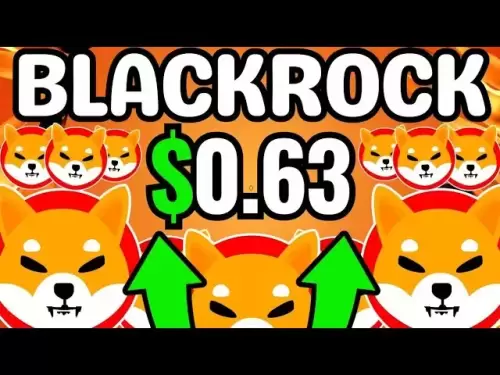-
 Bitcoin
Bitcoin $117700
-0.20% -
 Ethereum
Ethereum $3587
1.19% -
 XRP
XRP $3.422
-0.97% -
 Tether USDt
Tether USDt $1.000
-0.02% -
 BNB
BNB $733.3
0.69% -
 Solana
Solana $177.3
0.36% -
 USDC
USDC $0.9998
-0.01% -
 Dogecoin
Dogecoin $0.2446
1.42% -
 TRON
TRON $0.3183
-2.35% -
 Cardano
Cardano $0.8262
1.07% -
 Hyperliquid
Hyperliquid $44.37
-0.24% -
 Stellar
Stellar $0.4597
-0.87% -
 Sui
Sui $3.841
2.27% -
 Chainlink
Chainlink $18.44
3.20% -
 Hedera
Hedera $0.2658
1.54% -
 Bitcoin Cash
Bitcoin Cash $518.2
0.50% -
 Avalanche
Avalanche $24.38
4.08% -
 Shiba Inu
Shiba Inu $0.00001491
1.30% -
 Litecoin
Litecoin $112.7
10.87% -
 UNUS SED LEO
UNUS SED LEO $8.991
0.16% -
 Toncoin
Toncoin $3.183
-0.13% -
 Polkadot
Polkadot $4.377
3.56% -
 Uniswap
Uniswap $10.16
1.35% -
 Monero
Monero $325.1
2.08% -
 Ethena USDe
Ethena USDe $1.001
-0.01% -
 Bitget Token
Bitget Token $4.922
0.29% -
 Pepe
Pepe $0.00001343
3.62% -
 Dai
Dai $0.9999
-0.01% -
 Aave
Aave $319.5
-0.89% -
 Bittensor
Bittensor $416.3
1.23%
What is a layer 2 blockchain solution?
Layer 2 blockchain solutions enhance scalability and transaction speed by processing off-chain transactions while maintaining the security of the underlying layer 1 blockchain.
Jul 20, 2025 at 01:42 am
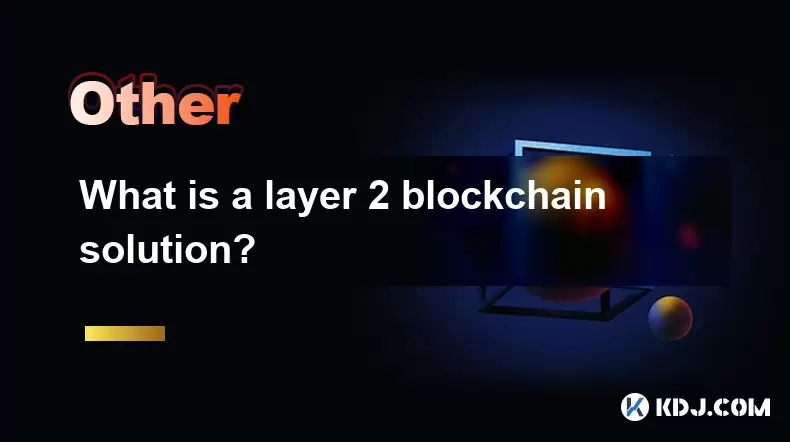
Understanding the Concept of Layer 2 Blockchain
A layer 2 blockchain solution refers to a secondary framework or protocol built on top of an existing blockchain system, often referred to as the layer 1. The primary goal of layer 2 solutions is to enhance the scalability and transaction speed of the underlying blockchain without compromising security or decentralization. This is especially crucial for networks like Ethereum, where high demand can lead to network congestion and increased transaction fees.
The concept is similar to building an express highway above a regular road. While the main road (layer 1) still handles essential transactions, the upper layer (layer 2) can process a large volume of transactions more efficiently. This off-chain processing reduces the burden on the main blockchain, thereby improving overall performance.
How Layer 2 Solutions Work
Layer 2 systems operate by moving transactions off the main chain while still relying on it for security and finality. This means that while the majority of transactions occur outside the primary blockchain, the main chain retains the ability to validate and settle disputes if necessary. This is achieved through various mechanisms, including state channels, plasma, and rollups.
For instance, in a state channel, participants open a channel between themselves and conduct multiple transactions without broadcasting each one to the main chain. Only the final outcome is recorded on the blockchain. This drastically reduces the number of transactions processed on the main chain, improving efficiency and reducing costs.
Types of Layer 2 Blockchain Technologies
Several technologies fall under the umbrella of layer 2 solutions, each with unique characteristics and use cases. Among the most prominent are:
- State Channels: These allow users to conduct multiple transactions off-chain while only submitting the final result to the blockchain. Examples include the Lightning Network for Bitcoin and Raiden Network for Ethereum.
- Plasma: A framework that creates child blockchains anchored to the main chain. These child chains handle transactions independently, periodically submitting a summary to the main blockchain.
- Rollups: These bundle multiple transactions into a single batch before submitting them to the main chain. Two major types are Optimistic Rollups and ZK-Rollups, each with different approaches to validation and security.
Each of these solutions addresses scalability in a unique way, making them suitable for different applications and user needs.
Benefits of Layer 2 Blockchain Solutions
The advantages of implementing a layer 2 solution are substantial. One of the most significant benefits is increased transaction throughput, allowing for faster and more efficient processing of transactions. This is particularly important for decentralized applications (dApps) and platforms that require real-time interactions.
Additionally, lower transaction fees are a direct result of off-chain processing. Since fewer transactions are recorded on the main chain, users can enjoy reduced gas costs, making blockchain technology more accessible to a broader audience. Layer 2 solutions also contribute to enhanced user experience, as transactions can be confirmed almost instantly without waiting for multiple confirmations on the main chain.
Challenges and Considerations
Despite their advantages, layer 2 solutions come with certain challenges and trade-offs. One concern is the added complexity of managing both on-chain and off-chain transactions. Users must understand how to open and close channels, handle disputes, and ensure the security of their funds.
Another consideration is the dependency on the main chain. While layer 2 solutions enhance scalability, they still rely on the underlying blockchain for finality and security. If the main chain experiences issues, such as network congestion or a security breach, it could impact the layer 2 system as well.
Furthermore, adoption and integration can be slow, as developers and users need to adapt to new protocols and interfaces. This transition period may involve a learning curve and potential resistance from stakeholders accustomed to traditional blockchain operations.
Use Cases and Real-World Applications
Layer 2 solutions have found practical applications in various sectors within the blockchain ecosystem. For example, micropayments become feasible with layer 2 systems, enabling users to send small amounts of cryptocurrency without incurring prohibitive fees. This is particularly beneficial for content creators and service providers who rely on frequent, low-value transactions.
In the realm of decentralized finance (DeFi), layer 2 solutions help improve the performance of lending platforms, decentralized exchanges, and other financial services by enabling faster and cheaper transactions. Gaming platforms also benefit from layer 2 solutions, as they require rapid transaction processing and low latency to provide a seamless user experience.
Moreover, cross-chain interoperability is another area where layer 2 solutions play a role. By facilitating faster and more efficient transactions between different blockchains, these solutions contribute to a more connected and versatile blockchain ecosystem.
Frequently Asked Questions (FAQs)
What is the difference between layer 1 and layer 2 blockchains?
Layer 1 blockchains are the foundational protocols, such as Bitcoin or Ethereum, responsible for consensus and data storage. Layer 2 solutions are built on top of these protocols to enhance scalability and efficiency without altering the base layer's structure.
Do layer 2 solutions compromise security?
While layer 2 solutions introduce additional components, they generally inherit the security of the underlying layer 1 blockchain. However, users must still be cautious about the specific implementation and potential vulnerabilities in the layer 2 protocol itself.
Can I use layer 2 solutions with any cryptocurrency?
Not all cryptocurrencies support layer 2 solutions. It depends on the specific blockchain's architecture and whether developers have implemented compatible layer 2 protocols. For example, Ethereum has several active layer 2 projects, while others may not have the same level of development.
Are layer 2 transactions irreversible?
Layer 2 transactions are typically reversible during the off-chain process, but once finalized on the main chain, they become irreversible, similar to standard blockchain transactions.
Disclaimer:info@kdj.com
The information provided is not trading advice. kdj.com does not assume any responsibility for any investments made based on the information provided in this article. Cryptocurrencies are highly volatile and it is highly recommended that you invest with caution after thorough research!
If you believe that the content used on this website infringes your copyright, please contact us immediately (info@kdj.com) and we will delete it promptly.
- WLFI Token Trading Approved: From Trump Ties to Community Votes
- 2025-07-20 09:10:12
- CoinDCX's $44.2 Million Security Breach: A Wake-Up Call for Crypto Exchanges
- 2025-07-20 08:30:13
- Trump, WLFI, and Token Release: A New York Minute on Crypto
- 2025-07-20 08:30:13
- Ripple's RLUSD: The Bluechip Stablecoin Set to Disrupt the Market?
- 2025-07-20 08:50:11
- Bitcoin Price Action: Is Weakening Demand on the Horizon?
- 2025-07-20 08:50:11
- Ripple's RLUSD: Top-Ranked Stablecoin Shaking Up the Market
- 2025-07-20 08:55:12
Related knowledge
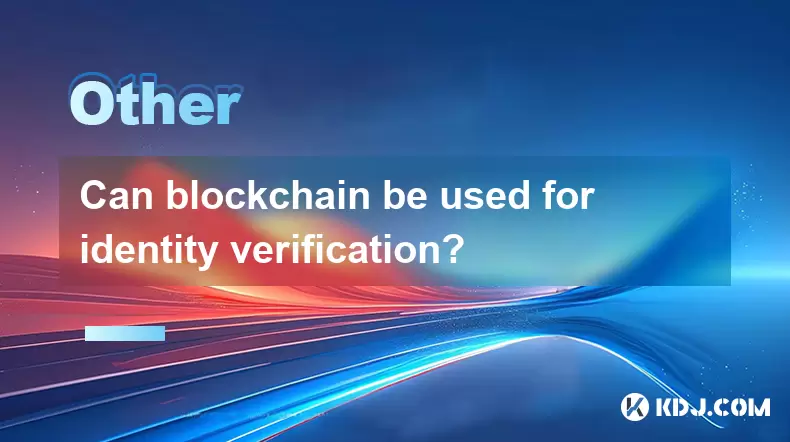
Can blockchain be used for identity verification?
Jul 18,2025 at 02:14pm
Understanding Identity Verification in the Digital AgeIn the modern digital landscape, identity verification has become a critical component for ensur...
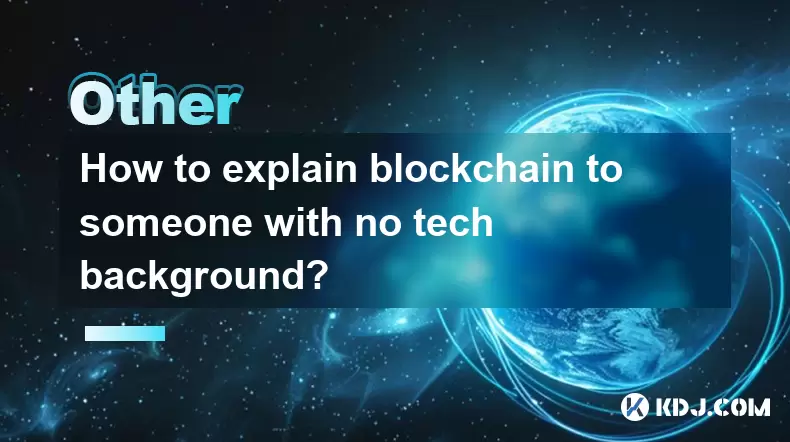
How to explain blockchain to someone with no tech background?
Jul 18,2025 at 11:08pm
Understanding the Basics of BlockchainTo explain blockchain to someone with no tech background, it's essential to start with simple analogies and avoi...

What is a layer 2 blockchain solution?
Jul 20,2025 at 01:42am
Understanding the Concept of Layer 2 BlockchainA layer 2 blockchain solution refers to a secondary framework or protocol built on top of an existing b...
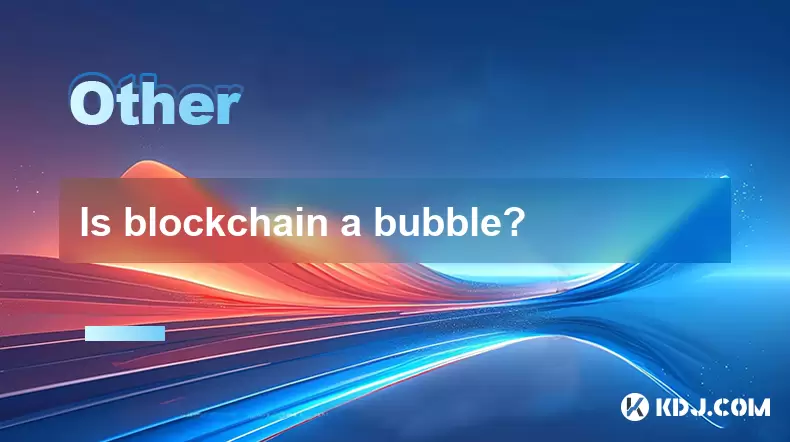
Is blockchain a bubble?
Jul 20,2025 at 06:49am
Understanding the Concept of a BubbleA bubble in financial terms refers to a situation where the price of an asset rises far above its intrinsic value...
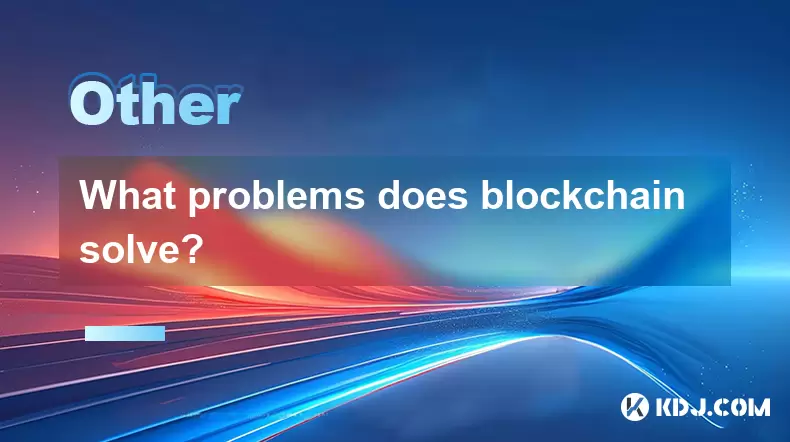
What problems does blockchain solve?
Jul 19,2025 at 12:01pm
Decentralization and Trustless SystemsBlockchain technology fundamentally addresses the issue of centralized control and trust in traditional systems....
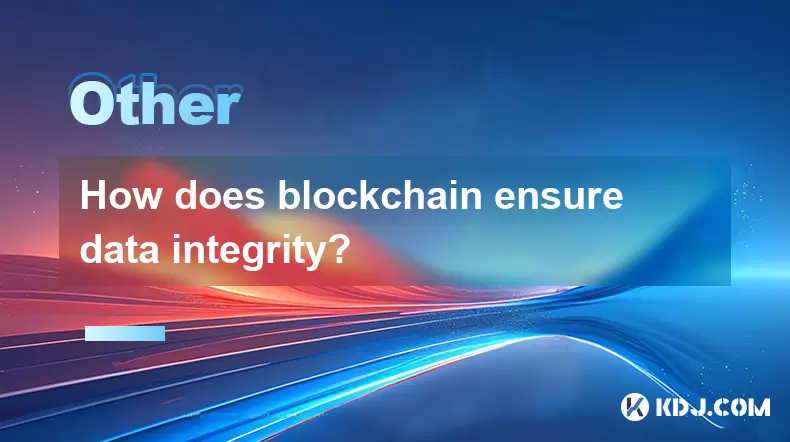
How does blockchain ensure data integrity?
Jul 19,2025 at 08:14pm
Understanding Data Integrity in BlockchainData integrity refers to the accuracy and consistency of data throughout its lifecycle. In the context of bl...

Can blockchain be used for identity verification?
Jul 18,2025 at 02:14pm
Understanding Identity Verification in the Digital AgeIn the modern digital landscape, identity verification has become a critical component for ensur...

How to explain blockchain to someone with no tech background?
Jul 18,2025 at 11:08pm
Understanding the Basics of BlockchainTo explain blockchain to someone with no tech background, it's essential to start with simple analogies and avoi...

What is a layer 2 blockchain solution?
Jul 20,2025 at 01:42am
Understanding the Concept of Layer 2 BlockchainA layer 2 blockchain solution refers to a secondary framework or protocol built on top of an existing b...

Is blockchain a bubble?
Jul 20,2025 at 06:49am
Understanding the Concept of a BubbleA bubble in financial terms refers to a situation where the price of an asset rises far above its intrinsic value...

What problems does blockchain solve?
Jul 19,2025 at 12:01pm
Decentralization and Trustless SystemsBlockchain technology fundamentally addresses the issue of centralized control and trust in traditional systems....

How does blockchain ensure data integrity?
Jul 19,2025 at 08:14pm
Understanding Data Integrity in BlockchainData integrity refers to the accuracy and consistency of data throughout its lifecycle. In the context of bl...
See all articles

























